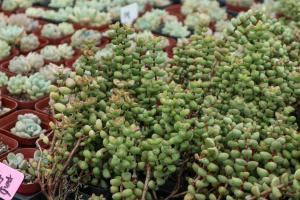Can a Peppermint Plant Survive the Winter in Pots?
Peppermint is a commonly used herb that is known for its minty taste and numerous health benefits. It is often grown indoors and can also be grown in pots for outdoor use. However, if you live in an area where winters are harsh, you may be wondering if your peppermint plant can survive the winter in pots. In this article, we explore the answer to this question and provide tips for successfully growing and overwintering your peppermint plants.
Understanding Peppermint's Cold Hardiness
Peppermint plants are generally hardy in USDA zones 3-7, which means they can tolerate winter temperatures as low as -40°F (-40°C). However, this hardiness is only applicable when the plant is grown in the ground. Peppermint plants grown in pots are more susceptible to frost and freezing temperatures, as the roots are not as well-insulated as they are when grown in the ground.
The Challenges of Overwintering Peppermint in Pots
When growing peppermint in pots, it is important to remember that the pot itself can become a hindrance when it comes to overwintering. The main issue with overwintering peppermint in pots is that the soil in the pot can freeze solid, which can damage the roots and kill the plant. Additionally, the pot can become too cold, which can also harm the plant's roots and cause damage.
Peppermint plants also require a dormant period during the winter months, in which they slow their growth and conserve energy. This can be difficult to achieve when growing in pots, as the increased exposure to cold temperatures can cause the plant to continue to grow, which can deplete its energy reserves and weaken it.
Tips for Overwintering Peppermint in Pots
While overwintering peppermint in pots can be challenging, there are some tips that can help you successfully grow and overwinter your plants. Here are a few things to keep in mind:
Choose the right pot: Choose a pot that is large enough to accommodate the root system and that provides adequate drainage. Terra cotta pots are a good choice, as they are porous and allow for good air circulation.
Insulate the pot: Wrap the pot in burlap or bubble wrap to help insulate it and protect the plant's roots from freezing.
Move the pot indoors: Consider moving your peppermint plant indoors during the winter months to protect it from the cold. Place it in a bright, cool room with good air circulation.
Reduce watering: Reduce the amount of watering during the winter months to prevent the soil from becoming too wet and causing root rot.
Mulch the soil: Add a layer of mulch over the soil in the pot to help insulate the roots and keep them warm.
Conclusion
While growing and overwintering peppermint in pots can be challenging, it is possible with the right care and attention. By choosing the right pot, insulating it, and following the tips outlined above, you can successfully grow and overwinter your peppermint plants. With a little patience and effort, you too can enjoy the many benefits of this versatile herb in your garden all year round.

 how many times do yo...
how many times do yo... how many planted tre...
how many planted tre... how many pine trees ...
how many pine trees ... how many pecan trees...
how many pecan trees... how many plants comp...
how many plants comp... how many plants can ...
how many plants can ... how many plants and ...
how many plants and ... how many pepper plan...
how many pepper plan...































